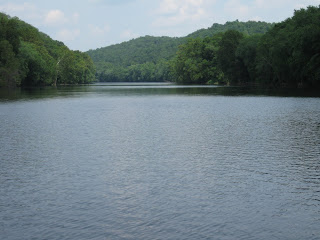
It has been exactly one year since we left Red Bird Mission and returned to our Hoosier home. The anniversary fills my mind with memories of the people and places that inhabited that year. In some ways our mountain experiences were parenthetical in our lives, brief and intransigent. In other ways they were so integral to our lives that we cannot imagine our be-ing without them. My journal is necessarily incomplete; after all, one cannot write of every experience nor share every picture, person, or place that touched us. It struck me that I had forgotten some painful moments of the journey and thus did not include them. Moments like being robbed soon after our arrival, of aching loneliness for family and friends, for the deep sense of isolation caused by closely hemmed mountains and forests, for the pain of accusations from the community while Red Bird struggled for its footing, for the need to sometimes leave the mountains in order to breathe freely again. But the human soul is so flexible and the journey so wonderful that these moments gave way to remarkable peace and to deep gratitude for the privilege that we knew was ours. We may have left little mark on the mountains, but they left a big mark on us.
Red Bird has changed in the last year. Drs. Lynn and Sharon Fogleman saw their last patients at the Clinic on Friday, July 29. They will be leaving for Africa in early 2012 to bring health services to the community of Yei in South Sudan. Contracting the Clinic services provided a structure that allows them to leave as another physician steps in to continue care in a seamless manner; I feel good that this can happen so smoothly. Dr. Lamar Keiser, long-time dentist, retired at the end of June. He continues to come to Red Bird two days a week from his home in Danville to provide patient care. The Mission continues to recruit a dentist to fill his shoes chairside. The dental lab sits rather quiet and remains an opportunity as yet unfulfilled. The School continues in its K-12 format with a greatly reduced budget; music remains an integral part of student life there. All other services remain in place as Red Bird continues to regain its financial footing and looks for ways to continue meeting human needs. The mountains remain unmoved, mists still roll in and dissolve again along their edges, the elk roam freely, people still live and love in the shadows of the Daniel Boone. The Red Bird River still springs from its limestone bed and moves inexorably to the Kentucky River and the great waters beyond. The circle of life seems little changed, but for one brief moment we stepped into another stream and made a tiny ripple.
For more information about the work at Red Bird Mission visit their website at www.rbmission.org. Better yet, go for a visit. Best of all, stay for a while and roll up your sleeves. You might notice a tiny ripple.


















































